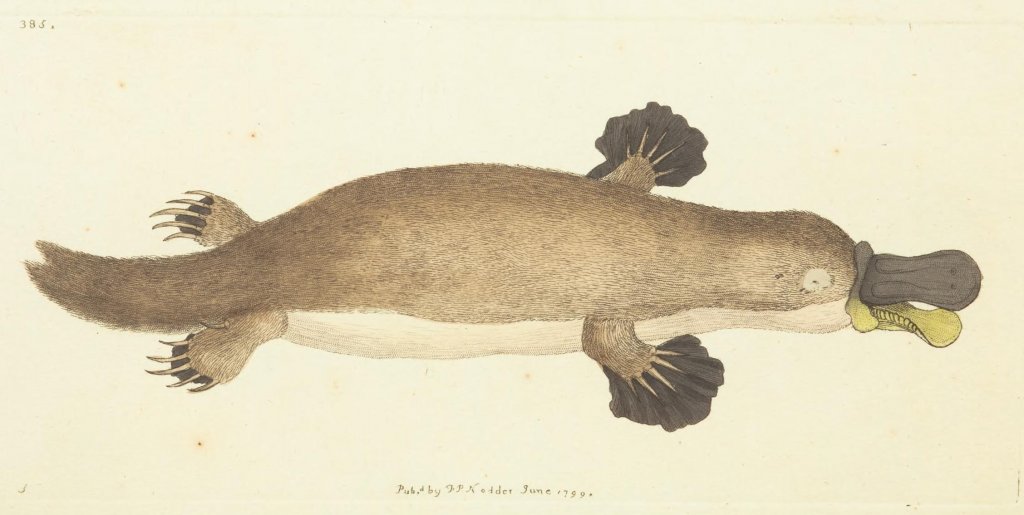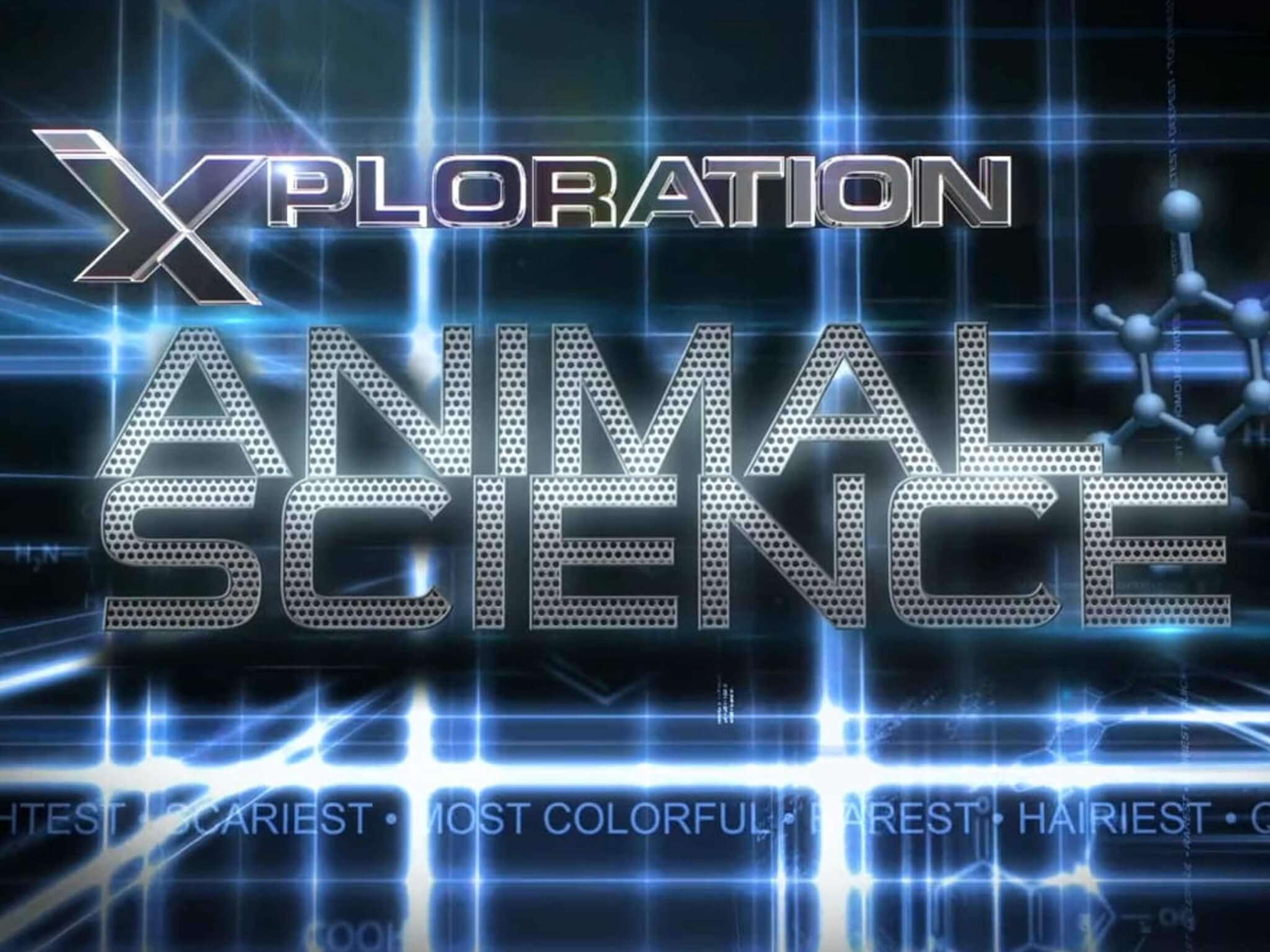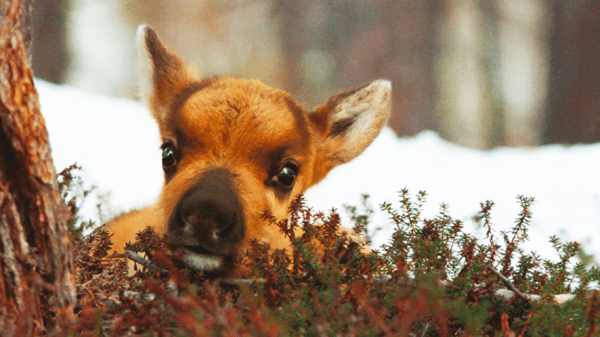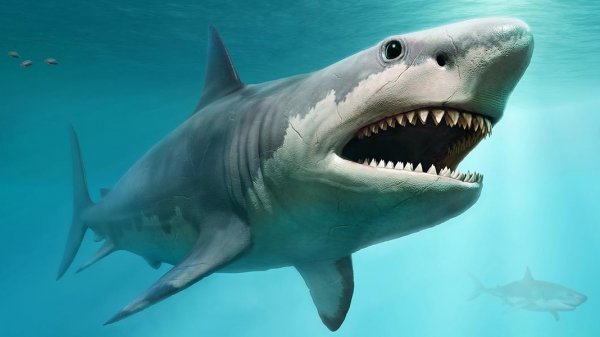The platypus is one of the weirdest creatures the Earth has ever produced. It has a flat bill like a duck, a tail like a beaver, and lays eggs like a reptile. The males have a poisonous spur on their hind feet and the females lack teats, so they have to nurse their young by “sweating” milk from their skin. If the platypus were a Pokémon, people would probably criticize its design for being over-the-top.
But it’s no fictional pocket monster; it’s a real animal. And researchers have wondered for years what sort of genetics gives the platypus its unique mishmash of features. The answer, according to a recent study published in Nature, is more straightforward than anyone expected: It looks like a blend of creatures because, on a genetic level, it is.
The Discovery of the Platypus

Frederick Polydore Nodder/Wikimedia/CC0 1.0
When European scientists first laid eyes on the pelt of a platypus in 1799, they thought it was a hoax — a fake thing stitched together by “artful Chinese” sailors trying to prank them. British naturalist George Shaw even used scissors to cut up the specimen he received, looking for stitches that connected the duck bill to the mole-like body. He failed to find any.
Once the platypus was grudgingly accepted as a real creature, then came the debate: Was it a bird? A mammal? Something entirely new? Did it lay eggs or give birth to live young?
If researchers had simply asked Aboriginal Australians first, they would’ve found their answers in a flash. The platypus had been known to Aboriginal tribes for generations as both a source of food and a creature of legend. Members of these tribes could have told the scientists that not only did the platypus lay eggs, the males also had a venomous barb on their feet.
Unfortunately, that wasn’t the case. It took nearly a hundred years for Western researchers to learn about these platypus traits. Since then, naturalists have discovered weirder and weirder things about the platypus such as its milk “sweat” and strangely biofluorescent fur. It wasn’t until 200 years after the West’s discovery of the platypus that scientists were able to finally study the genome of a female specimen.
The Weird DNA of a Weird Creature

Klaus/Wikimedia/CC BY-SA 2.0
In 2008, a study published in Nature examined a female platypus’s genome to figure out what made them tick. But the genome sequence wasn’t great; only 25 percent of the genes were mapped onto their corresponding chromosomes. In contrast, the new study has successfully mapped 96 percent of the genes. Taking the results from both studies, lead author Yang Zhou and the research team then compared the platypus’s genetic map to the genomes of other species including humans, opossums, chickens, and wall lizards.
This helped the team see where the platypus’s unique features, such as egg-laying, came from. Researchers know there are three vitellogenin genes that contribute to a creature’s ability to produce egg yolks. Chickens have all three of these genes, which explains why they lay eggs. Most mammals, like humans, have casein genes instead of vitellogenin, giving them the ability to produce milk for their babies rather than protein-rich yolks for nourishment.
The scientists found that the platypus, however, has both. It has one vitellogenin gene, enough to give the species the egg-laying trait, and casein genes to provide milk for its infants. Platypuses also lost half the teeth genes most mammals have; instead, they have genes for a flat, duck-like bill and a defensive spike on their foot that’s similar to reptiles.
Why does it have genes found in other species? Zhou’s team suggested that, nearly two hundred million years ago, a common ancestor once had these genes, then lost them as mammals evolved into different groups and species. The common ancestor might’ve had vitellogenin genes, but its mammalian descendants gradually abandoned those for casein genes instead. The platypus, they believe, is therefore a bridge between ancient and modern-day mammals with both its egg-laying and milk-providing genes.
“Indeed, the platypus belongs to the Mammalia class,” co-author and professor Guojie Zhang told Science Daily. “But genetically, it is a mixture of mammals, birds, and reptiles. It has preserved many of its ancestors’ original features–which probably contribute to its success in adapting to the environment they live in.”
The scientists’ findings potentially offer other researchers a rough timeline of the evolutionary history of mammals–including mankind.
The Future of the Platypus

Stefan Heinrich/Wikimedia/CC BY-SA 2.0 DE
However, despite the hope that studying the platypus could lead to a greater understanding of our own evolutionary history, there’s some concern that humans might not have long to learn more about them. The species is facing a population decline within its natural habitat in Australia. The devastating wildfires that swept New South Wales last year threatened to alter the platypus’s rivers, a situation that’s exacerbated by climate change. Increasingly hotter and drier weather raises the risk of wildfires and warming waters, both of which the platypus has little defense against.
Furthermore, plans for human construction and development projects–such as building dams–without consideration of the platypus also puts the species at risk. Conservationists hope that classifying the platypus as “threatened” on the endangered species list and pressuring government officials to regulate the damage done to its habitat can save the creatures before it’s too late.
In a press release about their research, Zhang stated, “…decoding the genome for platypus is important for improving our understanding of how other mammals evolved–including us humans.” Hopefully, increased interest in the platypus’s unique genetics can increase awareness of its plight as well.
More on Plex:
Xploration Animal Science
...

Wonders of the Sea
...

Diffusion Science Radio podcast












































